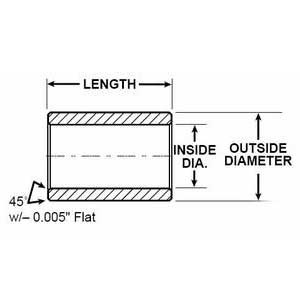Blog
How Metal Powder Develops Material Strength in Bearings
November 14, 2017
Regarding diffuse materials, just how does a powdery metal become a solid bearing? Imagine the mechanical strain as the rolling elements race along the bearing rings. A frictional ingredient is next, but the self-lubricating principle behind this device takes care of this thermal stress. As for the mechanical load, well, the compacted metal powder requires special metallurgical action. Known as an atomic diffusion process, how does this material fusing reaction work?
Metal Fusing: How Does Atomic Diffusion Work?
In bearings, the sintered powder stays in its discrete particulate form until the loose metal melts and diffuses. An ideal compaction sequence sees the metal combine with a lubricant, so great pressures and high temperatures are applied. The combined metal and oil transforms into a transient state, a metallurgically based phase that exhibits quasi-fluidic characteristics. If the purity of this state is maintained, a strong bearing is produced. Contaminants can hamper this process. Oxide coatings and foreign materials inhibit the diffusion stage, which then results in a weakened device. The bearing is still porous and loaded with self-lubricating potency, but those material impurities have undermined the phase transition stage. Quality-assured sintering lines rely on material purity.
Sourcing a More Robust Material Base
Powder metallurgical processing methods commonly recruit bronze powders. Alternatively, hardened iron alloys deliver more mechanical strength. There are also copper-iron amalgams and leaded-bronze alloys in use in this tough industrial sector. Depending on the selected metals, compressive strength is emphasized while frictional coefficients are optimized. Still, this is all a bit of a balancing act, with harder materials causing a loss of upper-limit radial velocity while product durability increases. In other words, a harder material is a viable option, although that harder base material can cause other performance hits, including a system-detrimental loss in speed handling.
As mentioned, the purity of the metal influences the atomic diffusion process, which then impacts the manner in which the metal powder fuses. Strength and product durability are undermined by P/M purity issues. A host of processing variable follows this purity issue. Grain size affects how well the metal bonds take place. The goal here is to shrink the grain size, produce a polished finish, and to ensure the porous structure remains very much in evidence. If the grain is coarse, the bonds between the sintered metal particles become that much harder to maintain. Again, processing temperatures, time-based pressure-compacting variables, and material purity issues determine just how strong the final product is as it leaves the bearing production equipment.
Optimized by: Netwizard SEO

